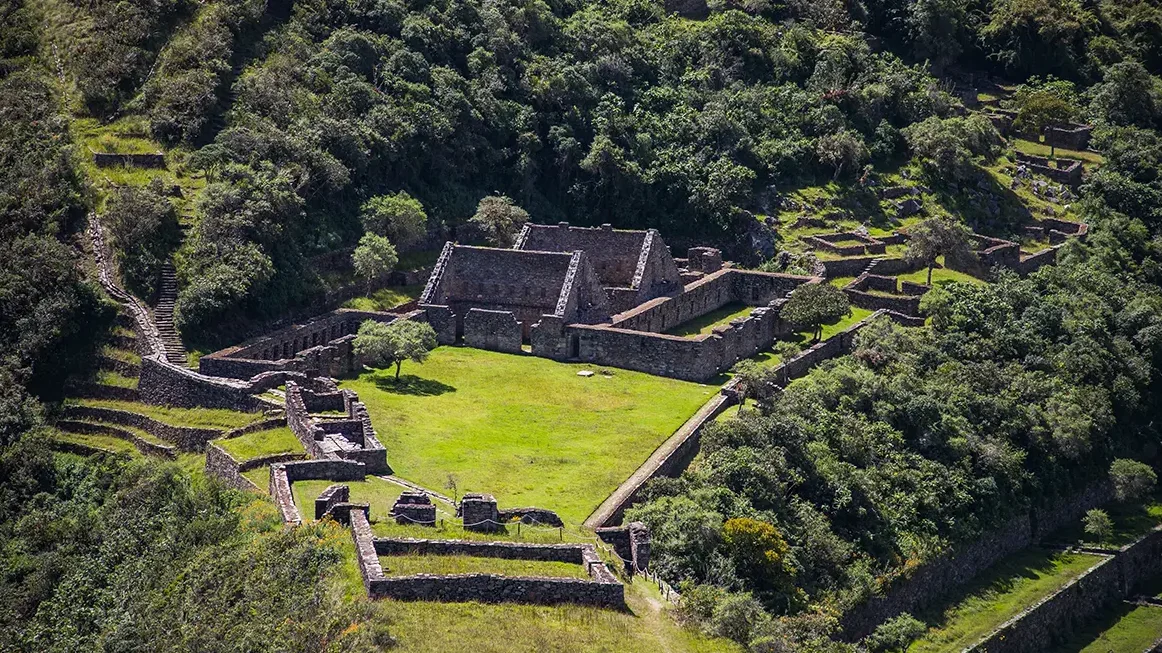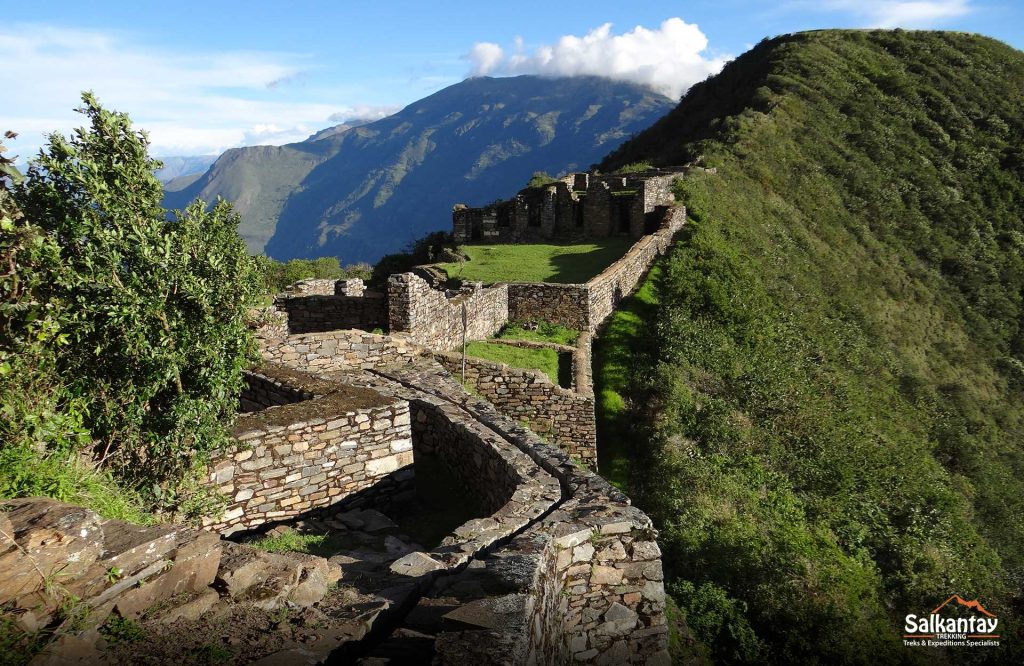Deep in the southern Peruvian Andes, nestled among towering mountains, rugged valleys, and misty cloud forests, lies Choquequirao—a majestic Inca city that still remains off the radar for most travelers. Known as Machu Picchu’s sister city, this archaeological gem has earned the nickname “the hidden Inca city,” and for good reason: not only does it rival its famous counterpart in complexity and beauty, but it also offers a unique cultural and spiritual trekking experience like no other.
For true lovers of hiking, nature, and history, hiking in Choquequirao Peru is one of the best Peru trekking routes, combining adventure, solitude, and a profound connection to the roots of the Inca Empire. And the best part? You can still experience it before the crowds arrive.

What is Choquequirao and Why Should You Visit?
Choquequirao, meaning “Cradle of Gold” in Quechua, was likely built during the reign of Tupac Yupanqui or Pachacútec as a ceremonial, administrative, and strategic center linking the highlands with the jungle. It’s perched over 3,000 meters above sea level, overlooking the deep Apurímac River canyon and surrounded by the incredible biodiversity of the Vilcabamba mountain range.
Unlike Machu Picchu, which can be accessed by train and bus, the Choquequirao hike demands effort, patience, and determination. This has helped it retain its mystical, isolated, and almost untouched atmosphere. Many adventurers describe it as the most powerful spiritual journey one can make in Peru—not only because of what you see, but because of what you feel when you finally arrive.

How to Get to Choquequirao: Trekking Routes and Options
The most common starting point for the trek to Choquequirao from Cusco is the small town of Capuliyoc, reached after a 4-hour car ride. From there, the journey unfolds over 4 to 8 days, depending on the itinerary you choose.
Option 1: Classic Choquequirao Trek (4–5 days)
This route follows a round-trip trail along steep paths that hug the Apurímac canyon. You’ll camp in rural, natural settings with breathtaking views of snow-capped mountains, deep rivers, and cloud forests. Day three is usually devoted entirely to exploring the archaeological site, allowing time to walk through temples, agricultural terraces, ceremonial stairways, and stone sculptures without the pressure of a strict schedule.
It’s the perfect choice for those seeking a raw, immersive Choquequirao adventure trip.
Option 2: Choquequirao to Machu Picchu Trek (8 days)
If you have more time and want full immersion in the Inca Trail system, this route takes you first to Choquequirao, then—after crossing high mountain passes and Andean forests—to the iconic Machu Picchu. This is one of the most demanding and rewarding trekking routes in Peru, letting you explore two of the most astonishing Inca sites on the continent in one journey.
Aside from its historical and spiritual value, this is a powerful cultural trekking in Peru experience, ideal for travelers who wish to connect deeply with nature, history, and the Andean ancestral identity.

What to See in Choquequirao
Much of Choquequirao’s charm lies in what hasn’t been uncovered yet. Archaeologists estimate that only 30% of the site has been excavated. That makes every visit feel like an archaeological adventure.
Highlights include:
- Agricultural terraces decorated with white stone figures of llamas embedded into the walls.
- Ceremonial plazas surrounded by sacred temples and enclosures.
- Advanced hydraulic systems that demonstrate the genius of Inca engineering.
- Ceremonial stairways carved directly into rock leading to the site’s most sacred points.
- The central ceremonial hub known as Sunch’u Pata, a leveled hill believed to be the city’s spiritual heart.
The atmosphere is unmatched. There are no crowds or rushed tours. You can pause, contemplate, listen to the wind rustling through the leaves, and feel like one of the first explorers discovering this sacred sanctuary.

Why Hike to Choquequirao in 2025?
The Choquequirao trek 2025 is more relevant than ever. The Peruvian government has announced plans to build a cable car system that would dramatically increase access to the site, potentially attracting up to one million visitors a year. While this might benefit local tourism economies, it also threatens the pristine natural and spiritual environment of Choquequirao.
Visiting Choquequirao now means experiencing it as the ancient Andean travelers did—with time, silence, and an unbroken connection to the mountain. As hiking enthusiasts know, the journey matters as much as the destination—and in this case, the journey is absolutely transformative.
Choquequirao with Experts
To ensure a safe, enriching, and respectful experience for both you and the local communities, it’s recommended to join a Choquequirao guided tour with responsible agencies and appropriate gear. Companies like Andina Outdoors offer customized and sustainable trekking in Peru gear to enhance your journey.

Tips for a Successful Choquequirao Trek
- Bring clothing for dramatic temperature changes.
- Wear high-quality trekking boots.
- Hiking poles are helpful, especially on the steep descents.
- Pack water and energy-rich food.
- Be physically and mentally prepared: the trail is challenging, but the rewards are immense.
Choquequirao is a vast, sacred Inca city still hidden among Peru’s Andes. Bigger than Machu Picchu but visited by far fewer travelers, it offers a profound Choquequirao trekking tour through untouched nature, archaeological wonder, and cultural richness. 2025 is the perfect time to go—before the cable car changes everything. Whether you go independently or pair it with Machu Picchu, the Choquequirao hike is undoubtedly one of the best trekking routes in Peru.


